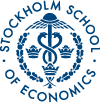No 678: Multiple paper monies in Sweden, 1789-1903: Substitution or complementarity?
Torbjörn Engdahl () and Anders Ögren ()
Additional contact information
Torbjörn Engdahl: Department of Economic History Stockholm University
Anders Ögren: EHFF - Institute for Economic and Business History at the Stockholm School of Economics and HTE EconomiX (UMR 7166) CNRS Université de Paris X - Nanterre
Abstract: Complementarity of money mean that two or more kinds of monies together fulfil the demand of the users better than they would without the existence of the other(-s). In this paper we study complementarity between paper monies in Sweden. We address four questions: 1) What was used as money on a macro level (money supply) and on a micro level (monetary remittances)? 2) What was the relative value of different monies in parallel circulation? 3) Was there seasonal variations in use and/or value? 4) Was there geographical variations in use and value? What we find is that the complementarity helped to solve the problem of providing sufficient liquidity domestically over time and space and thus and to keep a stable value of the currency.
Keywords: Complementarity; Liquidity; Money Supply; Money Remittances; Paper Money; Parallel Circulation of Money; Variations in Money Demand
24 pages, November 12, 2007
Full text files
hastef0678.pdfFull text
Questions (including download problems) about the papers in this series should be directed to Helena Lundin ()
Report other problems with accessing this service to Sune Karlsson ().
RePEc:hhs:hastef:0678This page generated on 2024-09-13 22:19:41.

